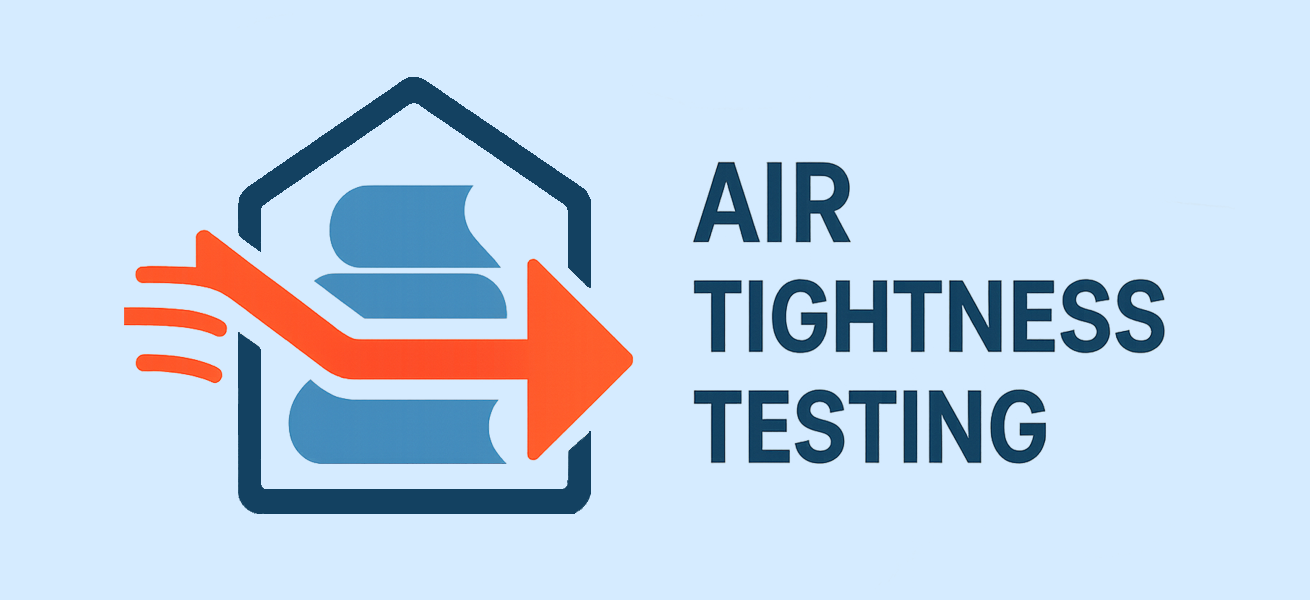
Airtightness testing is essential for reducing heat loss, cutting energy bills, and ensuring your building meets legal requirements. Whether you’re a homeowner, developer, or installer, Efficient Energy Homes Ltd delivers certified testing that supports retrofit compliance and improves building performance.
Who Needs Airtightness Testing?
- Retrofit Coordinators & Assessors (PAS 2035 compliance)
- New build developers (Part L compliance)
- Social housing providers
- Heat pump installers (SAP 10)
- Self-builders & homeowners improving energy performance
What is Airtightness Testing?
Airtightness testing measures uncontrolled air leakage through gaps and cracks in a property’s structure. These leaks can cause drafts, heat loss, dampness, and poor energy efficiency. Our tests help identify these weaknesses so your building can be sealed for optimal performance.
Certified Testing Methods
Blower Door Testing
-
- Measures leakage at 50 Pascals using a mounted fan
- Ideal for diagnostic checks during or after retrofit or construction
- Uses smoke pens and thermal cameras to detect leaks
Pulse Testing
-
- Low-pressure test (4 Pascals) for real-world conditions
- Quick, non-invasive, no sealing of vents or opening of windows
- Perfect for occupied homes and ongoing projects
Why Airtightness Testing Matters
- Reduces heating costs and energy waste
- Improves thermal comfort and air quality
- Prevents condensation, mould, and structural damage
- Ensures compliance with Building Regulations Part L and PAS 2035
- Helps increase your property’s EPC rating and market value
Full Compliance and Certification
Efficient Energy Homes Ltd is an IAA-approved provider, delivering certified results you can rely on. We ensure compliance with:
-
- PAS 2035
- TM25 (Airtightness in Dwellings)
- ATTMA standards
- SAP10 (for heat pump readiness)
Our Airtightness Testing Services Include:
-
- Blower Door and Pulse Testing
- TM25-compliant reports for residential and small commercial buildings
- Ventilation assessments (Part F compliance)
- Pre- and post-retrofit airtightness checks
- Digital reporting and certification
TM25 & Background Ventilation: Working Together
TM25: Airtightness in Dwellings sets out the required standards for new and existing homes. However, a tight building must also breathe properly.
We assess and verify background ventilation in line with Approved Document F, using:
- Ventilation flowrate testing
- IAQ (Indoor Air Quality) checks
- Assessment of existing and planned ventilation provisions
This ensures that your home is not just airtight – but also healthy and safe.
Independent Airtightness Assurance (IAA)
As a registered IAA-approved tester, we provide:
- Independent, third-party validation of your airtightness results
- Full traceability and certification
- Peace of mind for clients, installers, and building control
Our Airtightness Testing Services Include:
- TM25 Compliant Testing for homes & small commercial buildings
- Blower Door testing with diagnostics
- Pulse testing for non-invasive and occupied properties
- Part F ventilation assessments (including background & mechanical)
- Full PAS 2035 retrofit ventilation compliance
- Testing for air source heat pump readiness (SAP10 input)
- IAA certification and digital reporting
Efficient Energy Homes Ltd delivers professional, accredited, and fully insured airtightness and ventilation testing services across the UK. Book Your Airtightness Test Today
